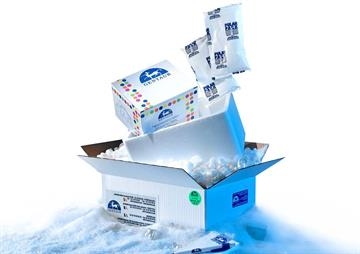NF-κB Report Cell Line-THP-1

NF-κB Report Cell Line-THP-1
0.01 EURAsk for quotation
On request
quantity
Produktdetaljer
Katalognummer: 870 - ABC-RC094D
Produktkategori: Företag och industri > Vetenskap och laboratorium
AcceGenGentaur
Storlek: 1 vial
Related Products
ABC-RC094D
NF-κB Report Cell Line-THP-1
The NF-κB reporter (Luc)-THP-1 cell line is designed for monitoring nuclear factor Kappa B (NF-κB) signal transduction pathways. It contains a firefly luciferase gene driven by four copies of the NF-κB response element located upstream of the minimal TATA promoter. After activation by pro-inflammatory cytokines or stimulants of lymphokine receptors, endogenous NF-κB transcription factors bind to the DNA response elements, inducing transcription of the luciferase reporter gene.
Ask for quotation
ABC-RC133D
Luciferase/GFP Report Cell Line-Human B lymphocyte
Transformed from huamn B lymphocyte cell line(from 61 years male), the Luciferase and GFP was constitutively co-expressed under EF1a promoter as two seperated protein(not as fusion), mediated via 2A element. The Puromycin resistance marker was expressed under Rsv promoter. Each cell demonstrates strong GFP fluorescent signal and luciferase assay signal via Luc assay(Note: It is the pooled stable cell population, not originated from a single cell colony. Thus you will observe the uneven GFP signal intensity amount cells)
Ask for quotation
79858
IRF Reporter (Luc) - THP-1 Cell line
The Interferon Regulatory Factor (IRF) reporter (Luc)-THP-1 cell line is designed to study the activation and signaling of Cytosolic DNA Sensors (CDS) in human monocytic cell line THP-1. It contains a firefly luciferase gene driven by multimerized ISRE (Interferon Stimulated Response Element) located upstream of the minimal TATA promoter. _x000D_The cGAS-STING pathway acts to detect cytosolic DNA and induce an immune response. Briefly, upon binding DNA, the protein cGAS (cyclic GMP-AMP Synthase) triggers reaction of GTP and ATP to form cGAMP. cGAMP binds to STING (Stimulator of Interferon Genes) which triggers phosphorylation of IRF3 via TBK1. IRF3 can then bind to interferon-stimulated responsive elements (ISRE) in the nucleus and leads to IFN-α/β production. The IRF reporter (Luc)-THP-1 cell line is highly responsive to STING and CDS ligands.









